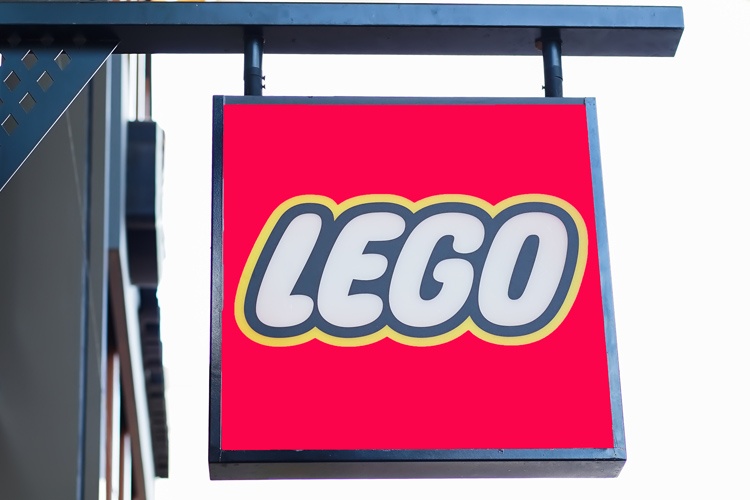The Lego trademark has been a symbol of imaginative play for almost 100 years. The Swiss company, which is still owned and run by the same family, was founded on the principle that toys could be educational, well made and fun.

Playing Well
At the age of 24, Ole Kirk Christensen moved to Billund, Denmark, where he purchased a wooden carpentry shop. A master carpenter, he began making and selling high-quality wooden items, including small pieces of furniture and toys. Although he sold everything from cabinetry to tables, he preferred working on toys.
The wooden toys of those early days were beautifully crafted items like cars, yo-yos and ducks. Christensen named his company Lego, which was a blend of two Danish words meaning “good” and “play.”
Uncompromising Quality
Christiansen had a reputation for being uncompromising about the quality of his items. At first, business was slow. When Christensen asked his family for a loan to keep the shop going, his brother asked, “Why don’t you find something better to do?” Eventually, however, that commitment and hard work paid off. In a few short years, his toys began attracting buyers from toy shops all over the region.
In 1937, his son Godtfred joined the family business at the age of 17. Godtfred was also a skilled carpenter who designed his own wooden toys.
In the 1940s, Christiansen designed a logo that read, “LEGO Fabriken Billund (Billund LEGO Toy Factory)” on a typeface made to look like wooden letters. This decal went on all the company’s wooden toys. The toy factory had 15 employees at this point.
Going To Plastic
In 1946, Ole Christiansen purchased a plastic injection moulding machine from the United Kingdom. He announced they should try making plastic toys, which were just starting to become popular.
His sons were skeptical, but he insisted he had a great idea for it. Sure enough, he soon developed the unique bricks we know now as interlocking pieces that stick together. He called them Automatic Binding Bricks, and they launched into the world in 1949.
In 1951, Godtfred convinced his father to change the name to Lego Mursten or Lego Bricks. After that, every red plastic brick boasted the simple, straightforward Lego logo. The Lego bricks were the first of the company’s toys to gain popularity in another country. Soon, they were a top-selling toy in Germany and gaining popularity in the rest of Europe.
Creating a Consistent Logo Look
After experimenting with different logos during this time, the company finally settled on a look that reflected its new direction. A simple red oval with the company name in white letters reflected this modern new image.
The oval also appeared on the Lego Mursten advertisements and catalogues. This was the first time the logo had a consistent design and color. It appeared on all Lego toys, including the wooden ones the company was still making.
Lego System
When Lego introduced the Lego System sets, it changed the logo colors again. The logo became a red square that resembled a brick. It showed the Lego name in slanted white lettering.
In 1960, a fire destroyed the company’s wooden toy warehouse. Instead of attempting to rebuild that side of the business, Lego decided to stop selling wooden toys and focus on its bricks.
Lego Conquers America
Lego became popular in Germany and the rest of Europe, but the company was ready for its next big step. In 1973, Lego began selling in the U.S. This move to a new market was accompanied by an image rebranding and a new logo.
The new logo kept the red square background but used a casual new font that gave the logo a sense of energy and fun.
As we know, Lego‘s success in the US was rapid. It has been a favorite toy ever since its introduction.
Trademark Lawsuits
Like any well-known brand, Lego has had to protect its trademarks. The company has had mixed results in these fights.
Lego’s patent on the design of its bricks began running out in the 1970s. In Canada, the patent ran out in 1988. In 2005, Lego ran up against this reality when it attempted to sue the Canadian company Mega Bloks, which makes a similar product.
The Canadian Supreme Court dismissed the case by saying, “Trademark law should not be used to perpetuate monopoly rights enjoyed under now-expired patents. The fact is that the monopoly on the bricks is over, and Mega Bloks and Lego bricks may be interchangeable in the bins of the playrooms of the nation.”
In 2017, Lego lost an appeal to the European Court of Justice over the same issue. The ECJ said the functional shape of a plastic brick could not be the exclusive trademark of one company.
Intellectual Copyright Cases
In 2018, Lego successfully sued a Chinese company that made Lego-style figurines, the small dolls Lego developed to go with its Lego sets. A court in China agreed that the Chinese company’s version violated intellectual copyright law. The Chinese company was ordered to cease production and compensate Lego with $650,000 in damages. This was one of several successful lawsuits Lego filed against Chinese imitators.
Lego currently has a lawsuit pending against a Connecticut company named Lakeshore Learning Materials. Lakeshore makes figurines that look like the Lego toys. It also sells plastic bricks and construction sets that are similar to Lego products.
Read more on trademarking your logo.
A Legacy of Quality and Fun
Lego’s playful logo is perfect for its position as a maker of high-quality toys. In 2000, Lego was named “Toy of the Century” by Fortune magazine and the British Association of Toy Retailers. In 2021, Lego won four of its seven nominations at the Toy of the Year Awards. Today, Lego Group is owned by Kjeld Kirk Christiansen, the grandson of the original founder. Lego’s future looks as bright as its cheerful red logo.

